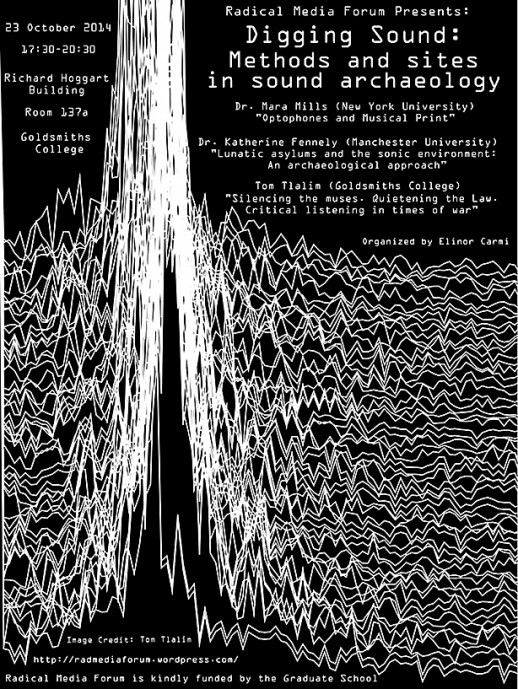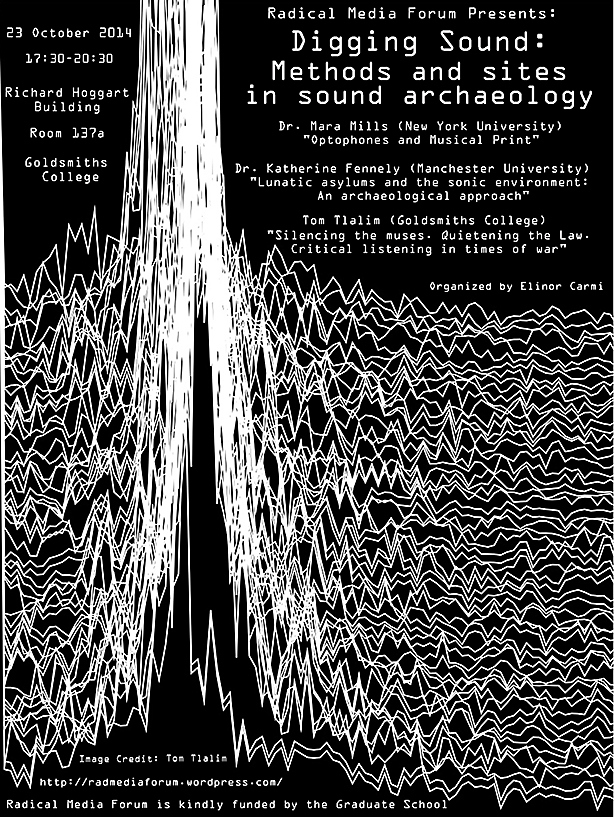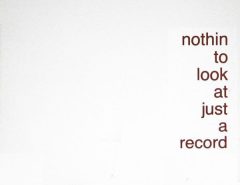
Program:
17:30 – Introduction by Elinor Carmi.
18:00-18:45 – Dr. Mara Mills (Department of Media, Culture, and Communication, New York University) –
“Optophones and Musical Print”.
This lecture surveys the history and historiography of the Optophone, a text-to-tone translation machine developed in London for blind readers at the outset of the twentieth century. The Optophone will be used to explore the topics of sound archives, minor media, and the politics of decoding.
18:45-19:30 – Dr. Katherine Fennely (Department of Archaeology , Manchester University) –
“Lunatic asylums and the sonic environment: An archaeological approach“.
The archaeological study of nineteenth-century lunatic asylums centres on the material and physical environment. Much historical research on these same institutions is similarly focused on the visual, the recorded and the extant. Conversely, much of the historical discourse surrounding asylum buildings in the early nineteenth century is centred on human interaction and engagement with these buildings, which were new and innovative in architectural style and plan. This paper will examine one aspect of the historical discourse on lunacy and asylums: the sonic environment. Through a consideration of the different datasets available to the researcher, the question of how (and can) historical noise be examined will be addressed. Various methodologies drawn from archaeological and phenomenological approaches to the historic environment, as well as interpretation techniques drawn from textual analysis, will be explored. The potential and limitations of asylums as both archaeological sites and artefactual resources for the historic sensory environment will be considered through the use of case studies from England and Ireland.
19:30-20:15 – Tom Tlalim (Artist. Associate Lecturer. PhD Candidate, Goldsmiths College) –
“Silencing the muses. Quietening the Law. Critical Listening in Times of War“.
Having recently spent some months working during a war, I noticed a multitude of acoustic signals, and of discourses on sounding everywhere in public space. The sobering maxim was repeated daily, that “When the cannons roar, the muses fall silent”. Indeed, sound, its presence or absence, has the ability to induce a sense of event and a war-like atmosphere even in quiet residential areas. Sirens, explosions, flyovers, military code words, with the tense voices of analysts, all seem to indicate a state of emergency. However, in resisting the automatic fearful instinct, developing a methodology of critical listening seemed imperative. In critical listening, sound becomes a medium through which subjectivity and relationality are negotiated. My talk will focus on some of the sounds and technologies that are used to orchestrate a climate of war in civilian areas. These will be performed, and presented alongside critical readings and acoustic counter narratives. The presentation is part of an ongoing artistic research into sonic politics in the Middle East.?
20:15-20:30 – Questions and Discussion.
20:30 – Wine Reception.
Location: Richard Hoggart Building (RHB), Room 137a, Goldsmiths College, University of London.





Leave a Reply
Lo siento, debes estar conectado para publicar un comentario.